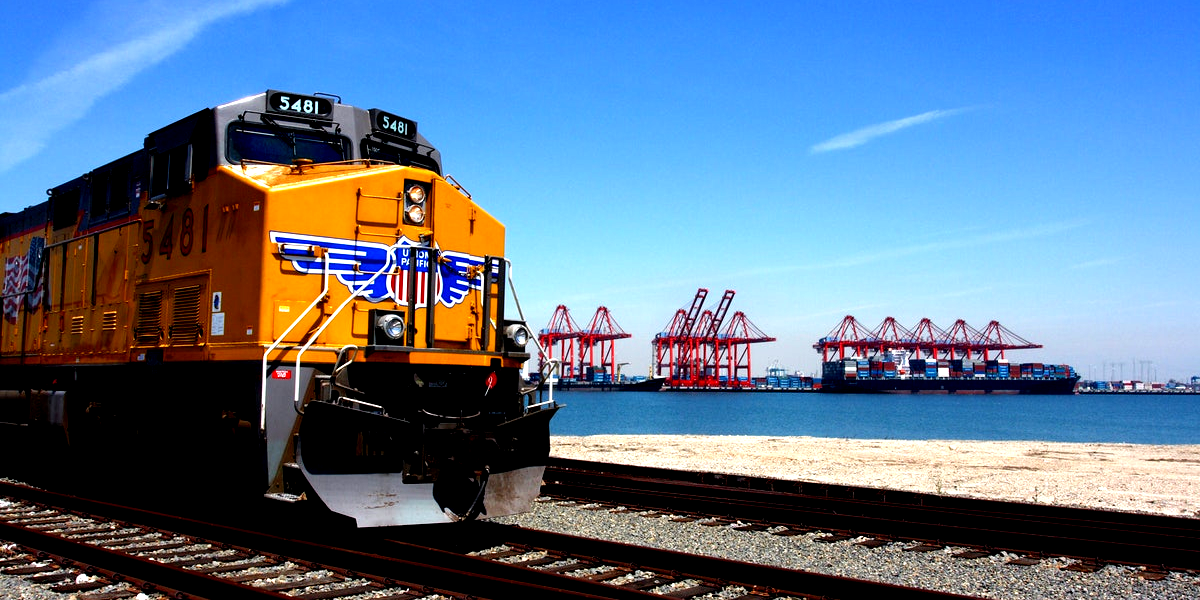Every day, without anyone even noticing, plastics are moving across the country and overseas. Big deal, right? But those little plastic pellets are important, because they grow up to become products all of us rely on every single day, like your phone, your glasses and even your clothes. Once manufactured, those grown-up pellets are shipped to yet another part of the country (or another country altogether) to become critical parts of our everyday lives.
Here’s how plastics transportation works – and the types of products we enjoy as a result.
From Pipeline to Finished Product
Before plastics become “plastics,” they originate from ethane and propane, which can both be transported by pipeline, truck or rail. Upon arriving at a petrochemical plant, ethane and propane are converted to ethylene and propylene, which are then polymerized into small plastic pellets.
Once plastic pellets are formed, they are typically transferred to a hopper rail car or hopper trucks and travel to a packaging facility or the end receiver to make plastic products. Oftentimes, plastic pellets are bagged and transferred to intermodal containers, which can travel on trains or ocean carriers. Once plastics are “containerized,” they can be shipped domestically or can travel to a port, transferred to an ocean carrier, and shipped overseas.
When exported from the U.S., containerized plastic pellets travel by truck or rail to a U.S. port, then to destinations in another continent, like Asia, Europe or South America.
Once plastic pellets reach their end markets, they are used to manufacture a wide variety of products through processes like extrusion, injection molding and blow molding. And then, of course, these finished products are shipped yet again once completed.
What’s Delivered?
When the first synthetic plastic was produced in 1869, it was used in products like eyeglass frames, combs, shirt collars, buttons, combs, billiard balls, photographic film and even dentures. Today, the list of products comprised of plastics is virtually endless, including parts for cars, computers and medical devices.
Without transportation, we wouldn’t have many of the products we buy today. For instance, those plastic pellets that travel overseas to Asia? Many end up in China, where they are manufactured into products people use every single day. In 2018, China’s exports of plastics and items made from plastic was the third-fastest gain in value, up 14.5% vs. 2017. Some of China’s most valuable finished plastic exports include:
- Phone system devices including smartphones - $240.4 B
- Computer parts, accessories - $45.3 B
- Automobile parts/accessories - $34.8 B
- Footwear (rubber or plastic) - $20 B
- Miscellaneous plastic items - $19.5 B
China may be the top exporter of plastic items, but it certainly isn’t the only one. Joining it in the top five countries that exported the highest dollar value worth of plastic items in 2018 are Germany, the United States, Italy and France, respectively. And among the top 15 exporters, Poland, South Korea, the Czech Republic and Mexico are the fastest growing. Plastics products truly travel the globe, thanks to ships, trains and trucks.
The Future of Plastics
What’s next for plastics? Scientists are on a mission to make them more sustainable. For instance, bioplastics, which are made from plants instead of fossil fuels, are being used to create substances that are more environmentally friendly than traditional plastics. Scientists are also seeking to make fully biodegradable plastics. And others are working to find ways to invent a process that converts plastics back into the fossil fuels from which they are made.
At the same time, 42 companies located throughout North and South America, Europe, Asia, Africa, and the Middle East have formed the Alliance to End Plastic Waste (AEPW). The Alliance aims to “develop and bring to scale solutions that will minimize and manage plastic waste and promote solutions by transitioning to a circular economy for plastics.” The AEPW has committed more than $1 billion with the goal of raising $1.5 billion over the next five years to develop and scale solutions that manage plastic waste and promote post-use solutions of plastic.
While the manufacturing and use of plastics continues to evolve, one thing remains the same: transportation will always be critical to their production and delivery.
Want a Better Way to Ship Plastics?
Union Pacific’s Dallas to Dock service offers plastics shippers a one-stop, plastics-shipping shop for bulk, form fill & seal, loading, drayage and transportation to global destinations that reduces transportation costs and improves transit while avoiding hurdles like container availability and driver shortages. Shipping by rail is also a more eco-friendly way to ship: Moving freight by rail instead of truck reduces greenhouse gas emissions by 75 percent. To learn more about your plastics shipping options and how you can leverage a greener way to ship, get in touch.
Related Articles
- Transportation Modes Revealed: Water
- Transportation Modes Revealed: Rail
- Are You a Fan of Football Parties? Rail Helps Deliver the Fun.
- How Rail Supports America's Food Production ... and Helps Feed the World









